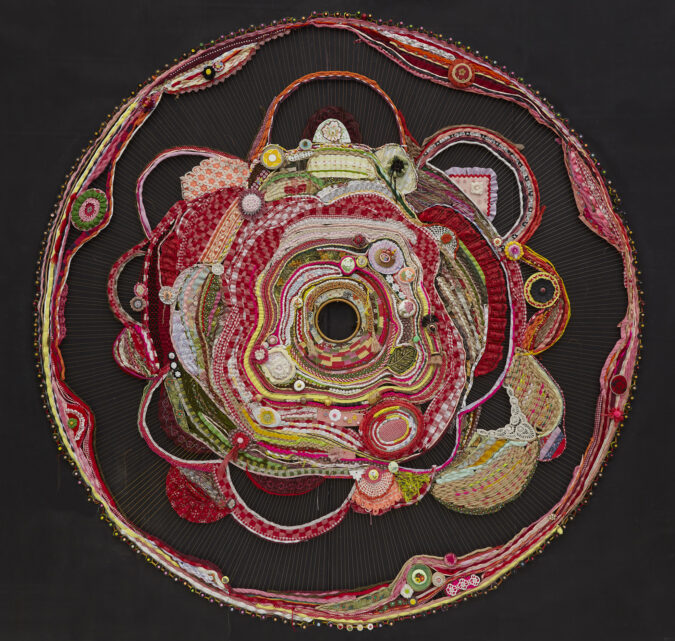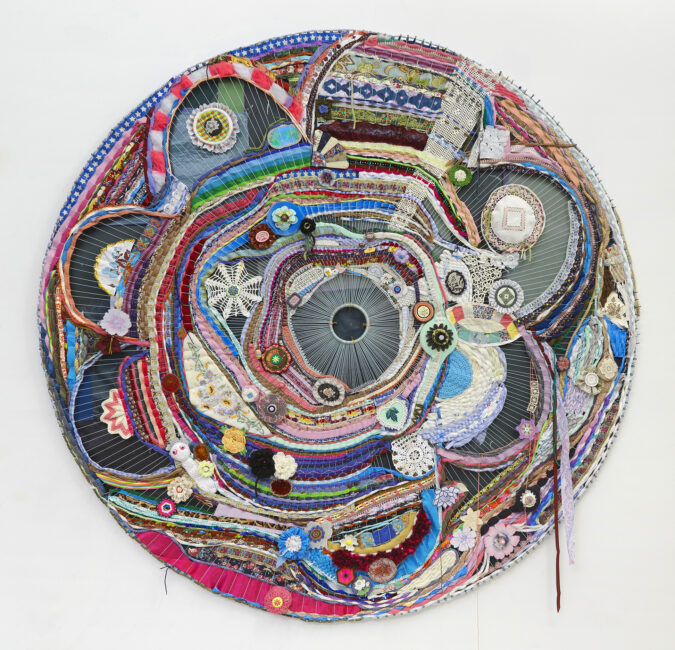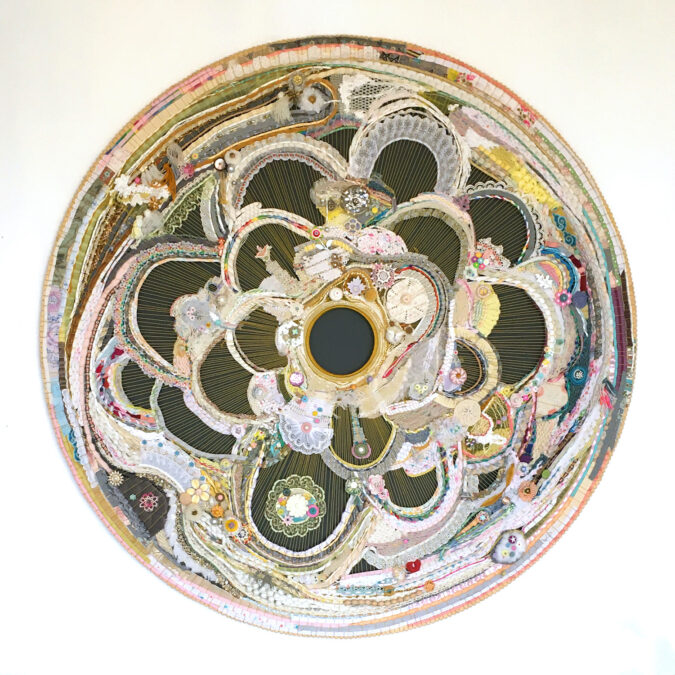Kirsten Hassenfeld
Kirsten Hassenfeld moved to New York in 1999 and has been living and working in Brooklyn ever since. Originally a printmaker, her work has shifted from paper sculpture to assemblies of recycled materials and large-scale woven wall works. She received a Saint Gaudens Memorial Fellowship in 2014 and has received grants from the Pollock-Krasner Foundation and the New York Foundation for the Arts. Her work has been shown at the Brooklyn Museum, the Jewish Museum in New York, and PS1/MoMa.
Question:
Your work and process is often described using words that include “re” in front of a full word – reuse, reclaim, recycle. The addition of “re” to these words means to do again. It is part of your principles to work with salvaged materials – to use them again. I would like to focus on another “re” word, respond. I believe your work is deeply responsive, motivated by noticing and reacting to what is available and present, rather than imposing a preconceived vision. Responsiveness always takes into account what has come before. Are there also moments in your work when you resist what is already there?
Answer:
In order to get to the notion of responsiveness, I want to take a quick detour into the other “re” words you mentioned. While it is true that by 2010 I had shifted away from using new materials in my work to building pieces with almost exclusively re-cycled, re-purposed and re-claimed materials, and that this shift came in response to my anxiety about the physical condition and deterioration of our environment, my relationship with the “not new” runs much deeper.
My emotional, often overwhelming, connection to physical objects has been with me from the beginning. It isn’t something I chose, and honestly, I might not choose to be this way, because of the intensity and pain it tends to cause. My memories of objects (their texture, particulars of color/density/manufacture) elicit something that is beyond the sentimental. I have connections and reactions to the stuff that populates our world that might be best reserved for other living things rather than the inanimate. So, not surprisingly, I have always been a sort of covert hoarder of things/materials that I feel are enchanted, that hold a power over me. Their particulars are frequently specific to by-gone eras, but not always.
I wonder about responsiveness. Are other artists not “responsive”? Would you try to make a material do something it doesn’t want to do? That has always been my creed, if I love and am interested in an object or material, I feel like it is my duty to find out what it wants to do. Does it prefer to bend in a certain way? Group together in bunches? Lay flat and stack? This experimentation is the root of my process, and it is a form of listening. It is the way I interact with the things I love.
The materials I put together in my work, I am thinking of the woven pieces I make now, but it can apply to other things I’ve made, are linked superficially by the way they coalesce visually, but on a deeper level, everything in a work will share a kind of DNA, because it all came together through me, I gave it permission to join the work. So I guess that is the other side of flexibility, a kind of control and mastery I exert in my work. Being open to materials (what is available and present as you said), and riding an edge of chaos/absurdity as I bring stuff together, listening to all the different “voices” the parts have, just barely keeping things in harmony, stands in opposition to my role as obsessive gatekeeper and master of my own weird universe.
When I left the practice of making sculpture of white paper, I did so partly because the paper (although it certainly has some very specific properties) did not provide me much in the way to respond to. I was simply bored with it. Better to make work with materials that have strong personalities. When you ask if I “resist what is already there”—that gets to the heart of what makes the process interesting to me. At times, I start a work with a notion to make something that runs counter to the character of the materials I am using. That kind of contradicts what I said earlier about letting the materials be their true selves, doesn’t it? To contradict their characters AND be themselves completely. I guess that is the paradox of what I do.








